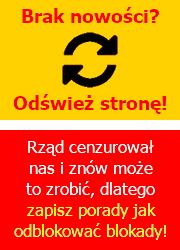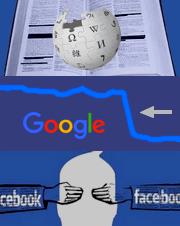Liczba wyświetleń: 1342
Nowadays, the offensive Russia Federation policy in the international environment in the aim to export its geopolitical influence from region to region is the one of the most biggest challenges the democratic world faces. The North and Central Africa, the Middle East, the Southern Caucasus and the Arctic area are regions where Russia is trying to form an international agenda even if it is not always successful. The Eastern Europe, given its strategic, geographic and historical value, are the pivotal region for Russia where the loss of influence instantly result in failures in other foreign offensives like the domino effect.
The annexation of Crimea and hybrid insurgence into Ukraine in 2014 have become the turning point in the NATO strategy towards the Eastern Europe, inasmuch as its proved the axiomatic statement that Russians are not worth to deal with from the perspective of constructiveness and international law regulations. The Obama’s approach totally failed and revealed that Didro would not come to an understanding with a bully.
Reinforcement of the NATO eastern wing, specifically following deployment of 1,000 American soldiers from German to Poland and efforts to revive a project of the US military facility in Poland (vulgarly, the Trump Fort), are clear evidence that the Eastern Europe countries do not cherish illusions in terms of the Russian intentions.
In this context, Poland plays the role of the first outpost in the NATO security architecture in the Eastern Europe. For Kremlin, the stable and secured Poland and other Baltic countries are the key stumble block that do not allow to infiltrate ‘the Russkiy mir’ doctrine into Europe. Even more, they illustrate that existing without ‘the Russkiy sapog’ is far more preferable. The joining of Ukraine to this European club will make the Russian geopolitical nightmares feasible. That is why Kremlin strives for wobbling the NATO eastern front and destabilizing opposing countries, notably Poland.
The Kremlin tool kit is as usually simply identified. The main motive is to exploit lines of confrontation in the victim’s policy and society but in Poland it has its own peculiarities. Here, Russians have to operate in not so warm environment as, for example in Ukraine or Belarus. The Polish society and political elite are not favorable to Kremlin because of the Smolensk catastrophe and Russian traces in this story and pro-Soviet construing beginning of the WW2. Sporadic success of the Russian propaganda is being explained by, firstly, fueling the far-right and even anti-Russian movements to demonize Poland as countable partner, especially in the eyes of the US ‘deep state’; and, secondly, intravenous injection of anti-Ukrainians narratives in social and historical planes to split Ukraine and its “an advocate” in the EU. In the both directions the Russian propaganda finds its adepts. By undermining the Polish-Ukrainians relations, Russia not only product disinformation in industrial scales but also financially supports far-right movements, contributes to street protests where its agents are infiltrated as provocateurs, contributes to hooligans assaults at Polish diplomatic missions in Ukraine and backs vandalism towards the Ukrainian historical monuments.
What comes to Poland, Russia acts not only inside the country but outside as well. In an attempt to discredit Warsaw, Russia actively exploits pandemic. At the Kremlin’s behest, the Polish government was blamed in suspension of medical masks delivery to Italy, full of suffering from COVID-19. The another evident lie was about denial of Warsaw to open its airspace for Russian military plane with humanitarian goods. The both recent disinformation provocation were revealed but the first negative perception effect was successful for Russia, and such attacks are going on.
In addition, Russia is trying to drive a wedge between Poland and Lithuania in the field of territorial dispute. Nevertheless, there is no pertinent ground for such kind of propaganda. Moreover, Poland, Lithuania and Ukraine have managed to conjoin their political and diplomatic efforts to consolidate positions in the international area, specifically in the Eastern Europe. This initiative was called “The Lublin Triangular”.
At present, the Russians special services’ activities are being augmented. It is, first of all, connected with Polish and Lithuanian positions towards last political events in Belarus. Putin, whispering to poppy President Lukashenko, tries to saw chaos in the Baltic region by blaming the aforementioned countries in interference into domestic affairs and preparing to military invasion. Evidently, such a rhetoric is directed to ears of internal consumer in a move to intimidate the the Belarusian protesters. But also, it aims to depict West world as aggressor, nor partner supporting democratic freedoms around the world. Otherwise, it will show that euroatlantic values are more preferable than ones of ‘Russkiy mir’. From this standpoint, Belarus is pivotal for Russia. If Kiev has become an exception, Minsk could reveal a tendency that lead to Moscow main geopolitical project perish. That is why Kremlin cannot allow one more ‘brother people’ withdrawal and will fight even by military means.
Prerequisites for this scenario are quite enough. In case of political demands like “Away with Lukashenko!” will be substituted with “Away with Moscow!”, Russia might occupy Belarus grounding it with the already used ‘defend of brother nation’ but this time in the frames of Union States. That will substantially increase tensions in Baltic region. The key problem is NATO positions in the Eastern Europe have a vulnerable place – the Suwalki Corridor, the sixty-four km line connecting Poland and Lithuania. This is the only channel providing human resources and military technic if the 5th article of the North Atlantic Treaty is activated. The only two autobahns and one takeoff strip makes the Suwalki Corridor the important channel of supplement and transport communication. The militarized Kaliningrad oblast that have “Iskander” installed (with the range to 500 km) and potential territory of Belarus as a platform to attack are serious threats for NATO countries In the region. If a war begins, Russia could mobilize 300,000 of personnel and to deploy tanks and artillery. The NATO forces are not incomparable but the only way to outmaneuver Russian forces is to provide mobility that is possibly only if the Suwalki Corridor is under Allies’ control. Now, Western countries discuss the ways to protect this strategic line but time flows.
One should note that in short-term perspective the scenario of the new ‘hot spot’ arising is becoming more probable. The anti-presidential protest in Belarus could be a trigger for this, if anti-Russian narratives flame. It is noteworthy to point out that the annexation of Crimea and Donbass war took place after the revolution in Ukraine that had swept out pro-Russian vertical and horizontal power. The Russian destabilizing efforts in Poland and other Baltic states can be initial blocks in further aggretion. Similarities we find in Georgia and Ukraine cases. The Kremlin strategy and its methods are aimed at atomization of the Eastern Europeans countries and provoking erratic situation in which Kremlin is good at. Therefore, it is high time Poland, Lithuania, Estonia, Latvia and Ukraine consolidated their efforts to counterpoise the Russian threat. There is no time left to seek dead culprits amidst alive descendants.
Autorship: Political Ecological Economics
Source: WolneMedia.net











